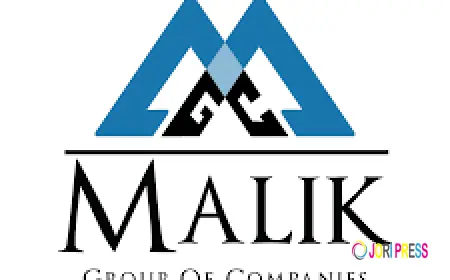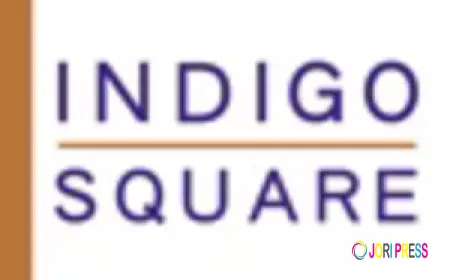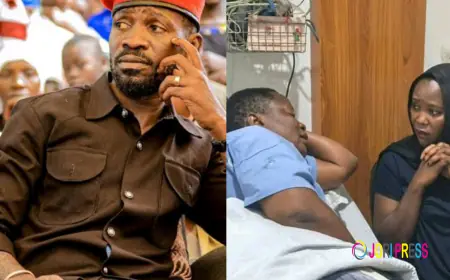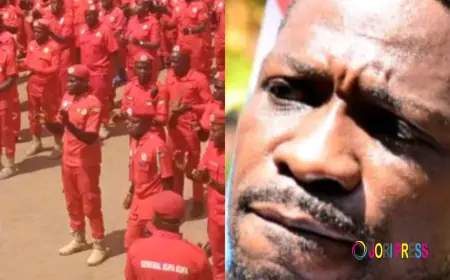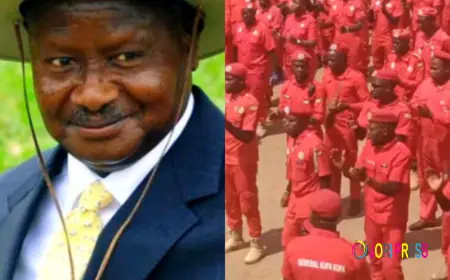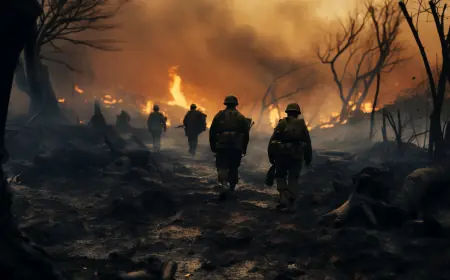DR Congo declares 16th Ebola outbreak


Health officials at WHO and Africa CDC are frank that case numbers may rise in the coming days as teams move from confirmation to containment
Kampala, Uganda | RONALD MUSOKE | On 4 Sept. 4, the Democratic Republic of Congo (DRC) declared its 16th outbreak of Ebola virus disease since 1976, after laboratory tests confirmed the Zaire strain in the South-Central province of Kasai near Angola.
The index case, a 34-year-old pregnant woman admitted in late August with high fever and persistent vomiting, is now the reference point in a widening response that spans remote health posts and the halls of Kinshasa’s national labs.
By the time of the declaration, health authorities had identified 28 suspected cases and 15 deaths across two health zones of Bulape and Mweka including four infections among healthcare workers.
Samples tested on Sept.3 at the National Institute of Biomedical Research (INRB) in Kinshasa confirmed Ebola Zaire, triggering rapid deployments, emergency logistics and the familiar choreography of tracing contacts, isolating cases and protecting those on the front lines.
DR Congo is a country whose geography dictates the pace of the response. Getting to the affected area in Kasai is hard, with few air links and at least a day’s drive from the provincial capital, Tshikapa. In the rainy season, a journey from Kinshasa can take multiple days by road. That distance magnifies every hour lost to doubt or delay and makes early organization essential.
A country seasoned by experience
However, DR Congo has been here before. The country has previously been hit by the Ebola virus 15 times. The first ever outbreak was confirmed in 1976, and that experience continues to shape the response. Kasai Province last reported Ebola in 2007 and 2008 while the country’s most recent outbreak, reported in Equateur Province in April 2022, was contained under three months through swift case tracing, targeted vaccination and rigorous infection prevention and control. Health officials in the country alongside international partners are leaning on that playbook again.
“Africa CDC stands firmly with the people of the Democratic Republic of Congo,” said Dr. Jean Kaseya, the Director General of the Africa Centres for Disease Control and Prevention (Africa CDC), after traveling to Kinshasa to meet the Minister of Health. “We are taking strong measures to bring this outbreak under control — protecting communities and supporting the health workers on the frontlines.”
Within hours of the declaration, Africa CDC had deployed experts to reinforce surveillance, contact tracing, data management, laboratory capacity, and infection prevention and control in the affected zones.
The World Health Organization (WHO) Africa Region office has also dispatched epidemiologists and specialists in case management and laboratory operations, while provincial risk-communication teams have begun moving into villages to explain how the virus spreads and how families can reduce risk at home and in clinics. WHO is also moving in two tonnes of supplies of personal protective equipment, mobile lab gear and medical commodities to shorten the gap between detection and care.
“We’re acting with determination to rapidly halt the spread of the virus and protect communities,” said Dr. Mohamed Janabi, the WHO Regional Director for Africa. “Banking on the country’s long-standing expertise in controlling viral disease outbreaks, we’re working closely with the health authorities to quickly scale up key response measures to end the outbreak as soon as possible.”
The clinical picture and the stakes
Behind the scenes, scientists at INRB in Kinshasa are doing what the institute has become known for during Congo’s long battle with Ebola: confirming cases quickly and reading the virus’s genetic signature.
On Sept.3, six samples were run on point-of-care GeneXpert Ebola assays, the BioFire FilmArray Global Fever Panel and real-time PCR with the Altona RealStar Filovirus kit. PCR-positive samples then went straight to nanopore sequencing, using the Oxford Nanopore Technology platforms and a pipeline designed to rapidly generate consensus genomes, explained Placide Mbala Kingebeni, the Head of the Epidemiology and Global Health Division and Director of the Clinical Research Centre at the National Institute of Biomedical Research in Kinshasa. Prof. Mbala’s account appeared in a preliminary paper published on Sept.4 on Virological, an online forum where analysis and interpretation of virus molecular and evolution epidemiology are regularly discussed by experts.
Prof. Mbala, who is also an Associate Professor at the University of Kinshasa’s School of Medicine, noted that early focus is twofold: to nail down the lineage and to understand whether this event represents a new spillover from an animal reservoir or something else. He said what is clear is that speed matters since genome data can help teams map chains of transmission and tailor the field response.
What the science shows
Ebola virus disease is a zoonotic hemorrhagic fever affecting humans and non-human primates, transmitted through contact with blood, bodily fluids or tissues of infected people, or contaminated surfaces and materials. Early symptoms that include; fever, fatigue, muscle pain, headache, vomiting and diarrhea, can sometimes be mistaken for malaria or typhoid in their first days.
However, as the disease progresses, bruising and unexplained bleeding may occur. On average, Ebola Virus Disease’s case fatality rate hovers around 50%. But, historical outbreaks of the Zaire strain have shown mortality rates as high as 90% without care. With prompt diagnosis and high-quality supportive treatment and, in recent years, access to therapeutics, mortality can be pushed down dramatically, into the 20–30% range.
Those numbers are not abstractions in Bulape and Mweka. The four infected healthcare workers are a red flag: breaches in infection prevention and control at the point of care can amplify any outbreak. For responders, that places immediate emphasis on triage, safe isolation, the use of appropriate PPE and rapid decontamination of facilities and households.
The geography shapes the response
Kasai is isolated but stable; officials describe it as relatively calm compared with parts of eastern DRC. Yet the province faces chronic strains: food insecurity, pockets of severe acute malnutrition, and a weak, underfunded health system that pushes many families towards traditional healers as a first stop.
Seasonal extremes, from heavy rains to flooding, and intermittent inter-ethnic tensions add complexity, including occasional population movements. In an Ebola response, each of these forces can pull in the wrong direction: malnutrition worsens outcomes, mobility spreads the virus, and low trust or misinformation delays care.
The logistical map will be as important as the epidemiological curve. Since few aircraft land in Kasai, supplies must move by road. WHO notes it takes at least a full day to reach the affected area from Tshikapa. That’s why prepositioning is critical.
On Sept. 5, the UN’s International Organization for Migration (IOM) announced it would mobilize a team stationed in the DRC to launch the initial phase of a population mobility mapping exercise in the Kasai region.
This preparedness effort, the UN agency noted, will support the identification of major mobility corridors and hubs in affected areas, as well as vulnerability hotspots and gathering places such as churches, markets, and bus stations, where health surveillance, risk communication, and prevention activities are most needed.
“IOM stands with affected communities at this critical moment,” said Amy Pope, the IOM Director General. “Responding to this outbreak demands swift action, close coordination, and above all, a people-centred approach that protects health workers, prevents further transmission, and ensures every person can access the care and information they need.”
Building the lines of defence
In Kinshasa, 2,000 doses of the Ervebo vaccine which is effective against Ebola Zaire are ready to ship. Once in Kasai, they will be used for ring vaccination: immunizing confirmed cases’ contacts and the contacts of contacts, as well as frontline health workers. The country also holds a stockpile of treatments that, combined with robust supportive care, can save lives if delivered early.
Still, health officials at WHO are frank that case numbers may rise in the coming days as teams move from confirmation to active search. That’s normal because the curve often climbs when surveillance switches on. The goal is to get ahead of transmission by mapping who saw whom, where and when — and to interrupt those chains promptly.
Africa CDC says it will continue to support Congo’s push to “strengthen and digitalize surveillance” for earlier detection, more efficient tracing and better case management, while protecting healthcare workers through stronger infection prevention and control as well as vaccination.
A backdrop of multiple threats
DR Congo’s public health system is juggling more than Ebola. The country is facing concurrent outbreaks of MPox, cholera and malaria. Each epidemic draws on the same finite pool of health workers and supplies.
Yet Congo’s track record –the hard-won experience of dozens of emergency responses–is precisely what regional leaders are banking on now. The 2022 outbreak in Equateur Province is instructive: early action, ring vaccination, and disciplined infection, prevention and control cut off spread before it could bend into a long tail.
That history matters for another reason: public confidence. Ebola responses succeed when people believe the system will help them, that an ambulance means care, not contagion; that an isolation ward is a path to survival, not a stigma. The presence of WHO and Africa CDC specialists, the visible deliveries of PPE, the structured briefings from the Ministry of Health –these are signals aimed at building that trust.
The way forward
There is no sugar-coating the risks. Ebola Zaire is unforgiving, and the Congolese terrain makes the job harder. But the response is already moving on multiple fronts: surveillance, contact tracing, infection prevention and control, vaccination, treatment and science. The tools at hand are sharper than those available in past outbreaks, and they are guided by a country that has learned, often painfully, what works.
Officials stress that more suspected cases will likely surface as the search widens. That is not failure; it is the response doing its job. What will matter is whether those cases are found early, isolated quickly and surrounded by a protective ring of vaccinated contacts and protected health workers.
This is the DRC’s 16th Ebola outbreak since 1976. That fact carries weight –a testament to the ecological realities that make spillovers possible, and to the persistence required to stop them. It also carries a quiet confidence born of experience. The country has done this before, and done it well. With laboratory equipment in Kinshasa humming, vaccines ready, and field teams moving despite the mud and distance, Congo is doing it again.
The message from Addis Ababa and Brazzaville to Kinshasa and Kasai is consistent: act fast, protect the front-line health workers, communicate clearly, follow the science and the arc of the latest outbreak can bend toward containment.





